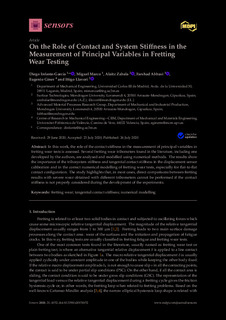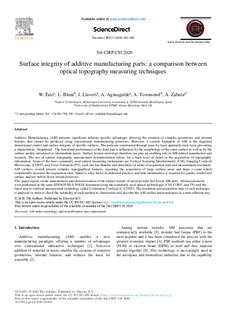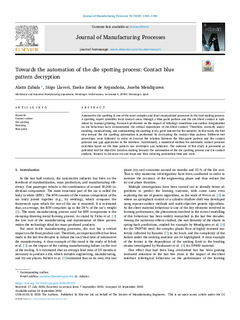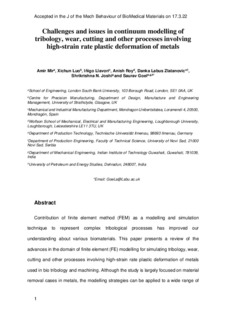Buscar
Mostrando ítems 1-10 de 17
On the Role of Contact and System Stiffness in the Measurement of Principal Variables in Fretting Wear Testing
(MDPI AG, 2020)
In this work, the role of the contact stiffness in the measurement of principal variables in fretting wear tests is assessed. Several fretting wear tribometers found in the literature, including one developed by the authors, ...
Surface integrity of additive manufacturing parts: a comparison between optical topography measuring techniques
(Elsevier B.V., 2020)
Additive Manufacturing (AM) presents significant industry-specific advantages allowing the creation of complex geometries and internal features that cannot be produced using conventional manufacturing processes. However, ...
A coupled 3D wear and fatigue numerical procedure: Application to fretting problems in ultra-high strength steel wires
(Elsevier Ltd., 2021)
This work presents a coupled 3D wear and fatigue numerical procedure for fretting problems in ultra-high strength steel wires that combines Archard’s wear equation with the Smith–Watson–Topper parameter to predict crack ...
Towards the automation of the die spotting process: Contact blue pattern decryption
(Elsevier Ltd., 2020)
Automotive die spotting is one of the most complex and least standardized processes in the tool making process. A spotting expert identifies local contact areas through a blue-paste pattern and the die/sheet contact is ...
Numerical study of advanced friction modelling for sheet metal forming: influence of the die local roughness
(Elsevier Ltd., 2022)
Numerical simulation of sheet metal forming processes has become indispensable in the last decades. Although the complexity of the frictional behaviour is identified as a key factor for the prediction accuracy, the industry ...
Numerical methodology based on fluid-structure interaction to predict the residual stress distribution in glass tempering considering non-uniform cooling
(Elsevier, 2022)
In this paper a novel numerical methodology for calculating non-uniform residual stress distributions during the glass tempering process is presented. Tempering techniques lead to non-uniform heat transfer rates causing ...
Challenges and issues in continuum modelling of tribology, wear, cutting and other processes involving high-strain rate plastic deformation of metals
(Elsevier Ltd., 2022)
Contribution of finite element method (FEM) as a modelling and simulation technique to represent complex tribological processes has improved our understanding about various biomaterials. This paper presents a review of the ...
Evaluación probabilística del vidrio templado basada en simulación multifísica avanzada de proceso y desempeño
(Sociedad Española de Integridad Estructural - Grupo Español de Fractura SEIE-GEF, 2023)
El vidrio es ampliamente utilizado en aplicaciones estructurales, estando presente en sectores como el sector de la
automoción o el sector de la construcción. El comportamiento estructural del vidrio depende principalmente ...
Análisis del efecto de shot-peening y el cementado en la vida a fatiga de los engranajes
(Sociedad Española de Integridad Estructural - Grupo Español de Fractura SEIE-GEF, 2023)
Debido a sus condiciones de trabajo, la fatiga es uno de los modos de fallo más comunes en los engranajes. A pesar de que habitualmente se emplean diversos tratamientos para mejorar las propiedades mecánicas de los mismos, ...
A novel formulation for radial fretting wear: Application to false brinelling in thrust bearings
(Elsevier Ltd., 2021)
Radial fretting is defined as the damage caused by the relative motion of a ball under a variable normal load. The conducted experimental tests proved the existence of this damage even in contacting bodies with similar ...












